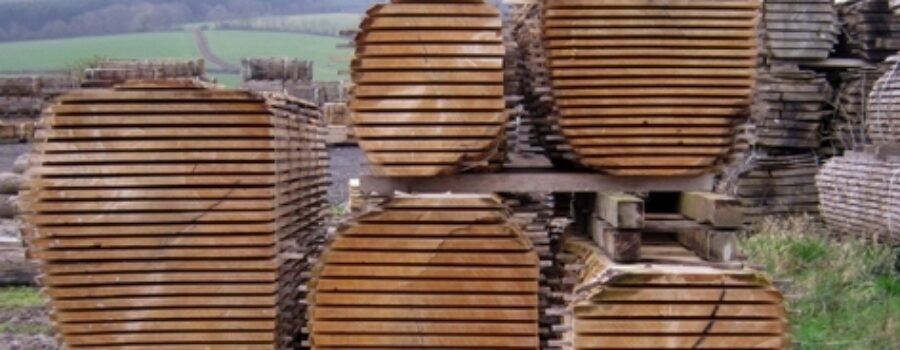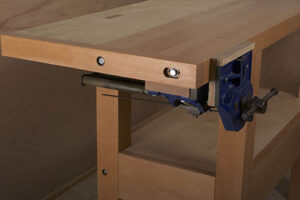So, you need some timber and you’ve decided that you’re happy to ‘play the game’ at the timber yard (refer to my previous blog for guidance on rules of this game); you promise not to behave like a prima donna, accept that boards with ‘split-ends’ are quite normal (although not necessarily desirable) and that you won’t be able to get the yard to ‘measure out’ every area of the board that you consider to be a fault (although occasionally there might be room for a little negotiation!). Now all you need to do is find a yard that has a good selection of timber, is relatively local to you, doesn’t charge you the earth and is run by friendly, helpful people who know how to smile whilst driving a fork-lift. Surely, all timber yards are like this? Why wouldn’t they be? After all they’re in business and to make money they will of course want to keep all their customers happy – won’t they?
It took me a number of years, a large amount of diesel and an occasional heated exchange amongst towering stacks of timber, but I count myself very fortunate that about sixteen years ago I chanced upon a timber yard that ticked pretty much all of the boxes – good selection of native timbers, some slightly more exotic timbers from around the world, a good level of tolerance of picky furniture makers, a nutty marketing department, very pleasant staff, a supply of coffee and “Cake Fridays”……….Finding such a yard inevitably involves a certain amount of trial and error although this can possibly be short-circuited by eliciting a bit of personal recommendation from a fellow woodworker – perhaps Social Media is a positive thing after all.
Having found a likely candidate for your business, you should at least do your homework and be properly prepared for the buying process when you turn up at the yard. In my book it’s not imperative that you have made a final decision on the type of timber you want for a particular project, after all, one of the huge benefits of finding a good timber yard and developing a good relationship with them, is that you can discuss, or even be informed of a particularly lovely consignment of Brown Oak or stunning Ripple Ash. But you should have a pretty good handle on how much you need and in what thicknesses; in fact you should really arrive with something that looks at least vaguely like a “Cutting List” secreted about your person, that and a tape measure hooked on your pocket and you might just look like you mean business and not have that ‘rabbit caught in the headlights’ look in your eyes.
You can take the ‘knowing how much you need/cutting list’ a step too far though. I am aware of someone who once visited a certain timber yard with a full collection of paper ‘patterns’, much like the dressmaking patterns that I used to see my mother wrestling with when I was growing up, representing all the components on his cutting list and the paper patterns were duly laid out on likely pieces of timber to see what would fit where. I am told that this was tolerated by the yard but that this sort of behaviour is actively discouraged, especially if the yard manager is expected to chase around the yard collecting oddly shaped pieces of paper that are fluttering around the yard in a confetti-like Brownian motion, having been made airborne by a gust of wind.
Other useful strategies for making the visit to a timber yard less terrifying? Using your cutting list, work out a rough cubic measurement for each thickness of timber, remember to add some ‘Waste’ to this measurement – your rule of thumb might be to add 50% waste for square-edged material and 100% for waney-edged, although this can of course be adjusted depending on how clean, straight and square the boards are – you might be beginning to understand that this is not the most precise of processes! I find it useful to work in cubic feet, not because I’m a dinosaur, just because I find it a much more helpful unit of measurement – for me, the cubic meter is just a bit too big and unwieldy. This is true for both comparing prices and working out quantities, I find that the bigger number for quantity and the smaller number for price is just so much more manageable e.g. 2.5 cubic feet at £35 per cu ft, compared with the metric equivalent of 0.070792 m³ at £1235.50 per cu m. Perhaps with guidance from the yard, choose the species of timber, you might start this process with an ‘Anything particularly lovely in at the moment?’ although be wary in an unknown yard, if you catch a look of triumph in their eyes at this point, they might be sensing an opportunity to get rid of some stock that’s been gathering dust for a while. At this point a fork-lift might be brought into play and some timber selected for you to inspect, with the assistance of a yardhand, or your own glamorous assistant if you’ve taken one with you, you might have a sort through this likely looking stack of timber. Don’t just march into the yard and start clambering over piles of timber or generally rearranging their stock though, this definitely won’t go down well, not to mention that stacks of timber are potentially very dangerous things. You’ll find that a visit to the timber yard selecting timber for your latest project has a secondary benefit of being a great opportunity for a good upper-body workout, so make sure your glamorous assistant has a good set of biceps. When inspecting timber remember to look at both sides of the boards, an unwelcome ‘feature’ might only be visible on one side! If you find yourself selecting timber in a dark, dingy timber store, take likely candidates outside to have a proper look at them, possibly ask if you can take a shaving or two from the surface of a dirty board to get a proper look at the colour/figure (something else to pop in your pocket before you leave your workshop- a small block plane), apart from general shape – (wind, cupping, bowing) and large knots, watch out for extensive splitting or ‘shakes’, keep an eye out for rot around where the sticks, or spacers, were positioned during drying, white splodges around the stick marks could denote areas of rot, which can be quite deep – this seems to particularly affect Ash, and look out for general surface discolouration, although this is often very difficult to identify before a board has been through the planer, especially in lighter woods like Sycamore.
When working out quantities, in a timber yard you need to remember that you are buying by volume, the standard measurement is cubic meters, but as mentioned earlier, I find a cubic meter to be rather unwieldy, so I work in cubic feet and convert to meters if I need to (1 cubic meter is 35.3 cubic feet if you’re interested!) You might find it helpful, when trying to get a rough idea of the cubic quantity of some likely looking lumps of tree, to remember that a 12 foot long board that’s 1 foot wide and 1 inch thick has a volume of 1 cubic foot!
Of course you could avoid the traumas associated with visiting a timber yard and just send them your cutting list and let them do all of the selecting for you, in fact this would be much less trouble, and much quicker for them than having you involved in the process, but are they going to have quite the same vested interest in picking something lovely for a table top? Is your interpretation of a beautiful pattern of medullary rays the same as theirs? Will they pick boards of a consistent colour………………………?
Do your homework, select a likely timber yard and be brave. Remember, you can always walk away if you feel you’re being bamboozled. Above all – enjoy yourself!!



